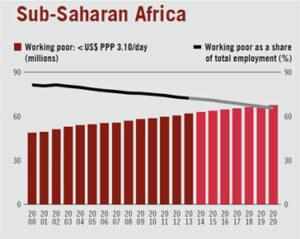The unemployment rate in Egypt recorded 7.3 percent of the total labour force during the second quarter of 2021 according to the Central Agency for Public Mobilization and Statistics (CAPMAS).
In the first quarter of 2021, Egypt’s unemployment rate was at 7.4 percent which marked a 0.1 decrease and a 2.3 percent decrease during the same period in 2020. According to CAPMAS, Egypt’s labour force in Q2 was estimated to be 29.115 million individuals in comparison to 29.284 million individuals in the first quarter which was a decrease of 0.6 percent.
In urban areas, the labour force is estimated to be around 12.981 million persons while in rural areas it is estimated to be 16.134 million persons. The total number of females was recorded as 4.882 million individuals.
According to Egypt’s statistics body, the decline is due to the decrease in both the number of workers and the unemployed as the government and companies take precautionary measures due to the third wave of the pandemic.
According to CAPMAS, the number of unemployed persons in the second quarter recorded 2.115 million which represents 7.3 percent of the total labour force compared to 2.155 million unemployed persons in the first quarter of 2021 with a decrease of 40,000 unemployed persons at a rate of 1.9 percent and a decrease of 459,000 unemployed or 17.8 percent compared to the same quarter in 2020.

In Q2 of 2021, the unemployment rate among males reached 5.7 percent of the total male labour force compared to 6. (https://www.propertyspecialistsinc.com) 6 percent in the previous quarter and 8.5 percent in the same quarter in 2020. On the other hand, the female unemployment rate reached 15 percent of the total female labour force in Q2 compared to 15.9 percent in Q1 and 16.2 percent in the same period under review in 2020.
In the age group (15-29), the rate of unemployment was 68.4 percent compared to 62.4 percent in the first quarter of 2021.
“While 10 to 12 million youth enter the workforce each year, only 3.1 million jobs are created, leaving vast numbers of youth unemployed. The consequences of youth unemployment in Africa are pervasive and severe: unemployment translates to poorer living conditions, fuels migration out of Africa, and contributes to conflict on the continent itself. Above all, youth unemployment constitutes a failure to capitalize on one of the continent’s greatest assets for growth: its large and growing population of talented young people.” African Development Bank explained in their ‘job youth Africa report’.
On the other hand unemployment rate in South Africa rises to the highest in the world on a global list of 82 countries according to a report by Bloomberg.
According to Statistics South Africa, the unemployment rate rose to 34.4 percent in the second quarter of 2021 from 32.6 percent in the first three months to March. The unemployment rate for people who were available for work but not looking for jobs rose to 44.4 percent from 43.2 percent in Q1 of 2021.
According to Bloomberg” The unemployment rate in Africa’s most-industrialized economy has been above 20 percent for at least two decades, even though output expanded by five percent or more a year in the early 2000s.”

According to a study by the International Labour Organization (ILO) in 2018, the majority of youths aged between 15-24 representing about 94.9 per cent are informally employed, rural-based, have little to no education and are involved in subsistence agriculture.
In Sub-Saharan Africa, most young people (95.8 percent) are engaged in the informal economy compared to 87.5 percent in North Africa.
According to the International Labour Organization, young women are more involved in the informal economy compared to young males while the gender gap is small but increases with age. Young adults aged 25-29 are less likely to be in the informal economy than the younger group.
“To sustainably address the employment challenges Africa is facing, particularly for the youth and to reap the demographic dividend, concerted efforts are needed to implement an appropriate and customized mix of pro employment policies and programmes at macro, sectoral and labour market levels with a strong emphasis on the demand side support for structural transformation while paying attention to disadvantaged groups in the labour market,” ILO advised.











